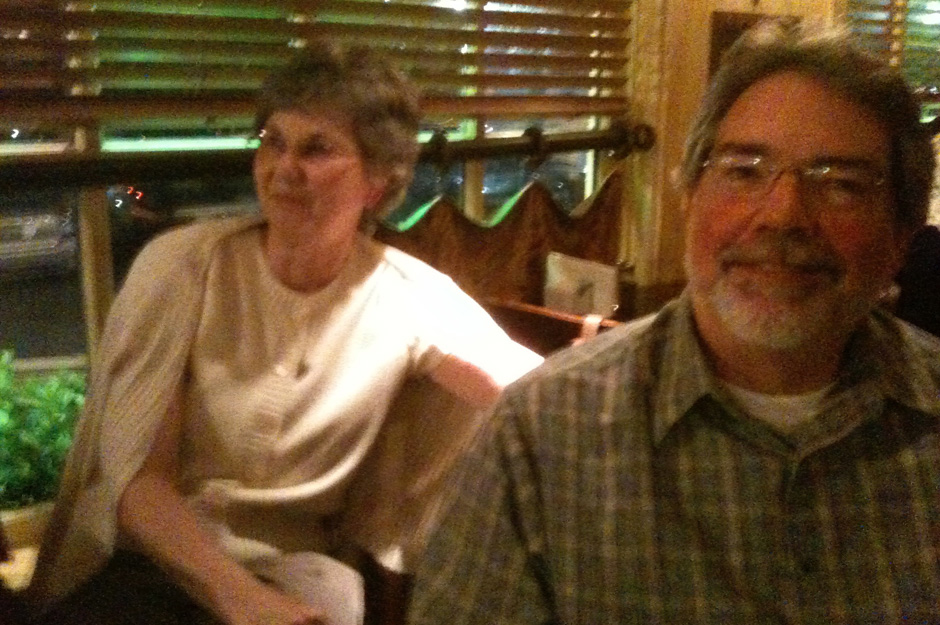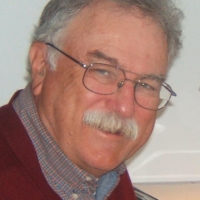
BALTIMORE—Jim Baldridge, who devoted his life to the labor movement, to the fight for equality and world peace, died at his home December 20. Margaret, his wife of 47 years, and their daughter, Mary Jean, were by his side. Their son, Paul, was en route from his home in Nebraska.
Baldridge’s last major political assignment was as President of the Maryland-D.C. Alliance for Retired Americans (ARA), an 80,000 member affiliate of the AFL-CIO. He assumed the post in 2013 and spent the rest of his life mobilizing retirees to fight back against attacks on Medicare, Medicaid, Obamacare, and Social Security by the ultra-right Republicans on Capitol Hill.
A few months ago, by then weak and frail, Jim attended the retirement banquet for his dear friend, Fred Mason, president of the 350,000 member Maryland-D.C. AFL-CIO. Margaret was with him. Mason was at the microphone thanking the crowd when he caught sight of Baldridge sitting at a table. He departed from his speech to praise Baldridge as a model trade unionist, loyal, clear-thinking, always working to unite the ranks of all races, gender, and creed against their common enemy. The crowd burst into applause. Speaking about that moment later, Baldridge was so touched that tears welled in his eyes.
“When Jim became President of the Maryland-D.C. ARA, it was one of the proudest moments of my life,” Mason told the People’s World in a phone interview.
Mason, now “emeritus” president, added, “I recommended Jim for a position on the Executive Board of the Maryland-D.C. AFL-CIO.” It was a position Baldridge accepted.
Added Mason, “Jim was the kind of leader who not only showed up at meetings himself, he always brought other workers with him. He was a good and loyal friend. You could always count on him. He was always on the right side of any fight we were in.
“We loved to talk politics together. He knew how to bring practical know-how together with his ideals. He was anti-racist and always worked to build unity in any struggle we were engaged in. He was not dogmatic. He brought those qualities into the workplace at Johns Hopkins Hospital.”
Mason was Executive Vice President of Local 1199-E, when he met Baldridge in 1989. Baldridge was a Local 1199-E leader in the maintenance department of the hospital. “We needed some strong leadership in that department and Jim provided it.” They became close friends along with other 1199-E stalwarts like Les Bayless, Armeta Dixon, who later was elected 1199-E Vice President, union attorney Steve Godoff and Keith Zimmerman.
Baldridge came of age politically in the early 1970s as an inside machinist at Beth Steel Shipyard where his proficiency in math and skill in handling huge wrenches. hammers and other tools helped him repair propellers, and other running gear on ocean-going ships. He was an active member of the Union of Shipbuilding and Marine Workers of America and helped organize a rank and file caucus. He worked there nine years until the shipyard closed. Then he found work as a mechanic repairing hospital equipment at Johns Hopkins Hospital were he worked for thirty years, retiring in 2011.
James Allen Baldridge was born August 4, 1946 in Hastings, Nebraska. The family moved to Painesville, Ohio, near Cleveland. Jim’s father, a chemist, got a college teaching position. Baldridge attended Mentor High School where he took up the clarinet. He developed a deep love of music that lasted into his later years when he sang with the Charm City Labor Chorus. He also fell in love with blues music that fit well with his quiet, dry, sense of humor.
He attended Ohio Wesleyan University but in 1965 dropped out and joined the U.S. Navy. The Vietnam War was raging and Baldridge was appalled by the atrocities, the rising death toll. He joined the GI anti-war movement. He had been stationed at the Patuxent Naval Air Station in southern Maryland and met Margaret Harmon, a school teacher.
When Baldridge was deployed to Iceland, he continued his anti-war activities and also corresponded with Margaret who reinforced those views. He returned to the U.S. and settled in Baltimore. Margaret by then was teaching in nearby Towson, Maryland. Together, they plunged into the peace movement, so active that they were arrested for defacing a U.S. Army recruiting poster in downtown Baltimore. The eminent civil liberties attorney, Harold Buchman, got them out of jail. They were married in 1970.
The couple also started visiting the New Era Bookshop managed by Bob Lee, who introduced them to the Communist Party USA. They joined the Party. Among the early undertakings, was driving to Chicago with three other young people to attend the founding convention of the Young Workers Liberation League. They also befriended George A. Meyers, Chair of the Labor Commission of the CPUSA, and Jake Green and Joe Henderson, two African American labor activists who had served successively as chairperson of the Maryland CP.
All three were veteran union organizers who had played a leading role in the CIO drive that unionized basic industry in Maryland by defeating the divisive tactics of giant corporations like Bethlehem Steel. Meyers had been the President of the Maryland-D.C. Congress of Industrial Organizations (CIO). He was convicted under the witchhunt Smith Act and served four years in prison. It was from labor movement veterans like these that Baldridge learned the strategy and tactics of fighting back against the ruthless war on the working class waged then—and today—by the corporations and ultra-right Republicans.
They also participated in weekly mass distributions of 800 copies of the Daily World at the clock house of Beth Steel’s Sparrow’s Point Mill and many other plant gates and working class neighborhoods.
Baldridge continued to distribute the paper until the print edition ceased publication. He and this reporter often drove in his pickup to the Greyhound Bus Terminal to retrieve 50 or even 100 bundles of the paper to be distributed by a team at mass demonstrations in Washington, D.C.
Baldridge remained active until the end in Veterans For Peace, driving his pickup truck festooned with anti-war slogans in the Martin Luther King Jr. birthday march on MLK Boulevard in Baltimore followed by a contingent of anti-war vets.
A celebration of Jim Baldridge’s life is set for Saturday, Feb. 17, 2 p.m. at Govans Presbyterian Church, 5828 York Road, Baltimore.










